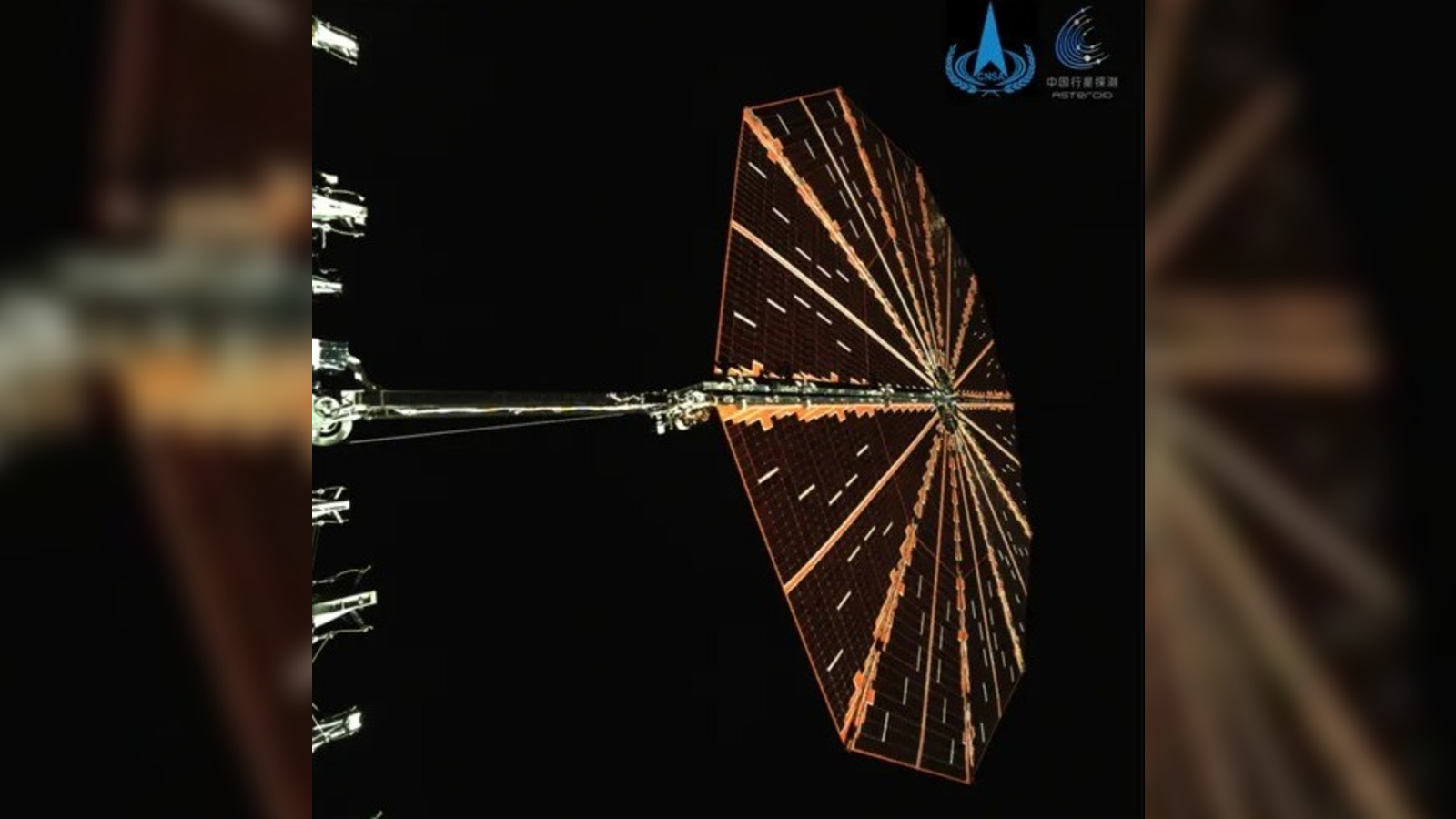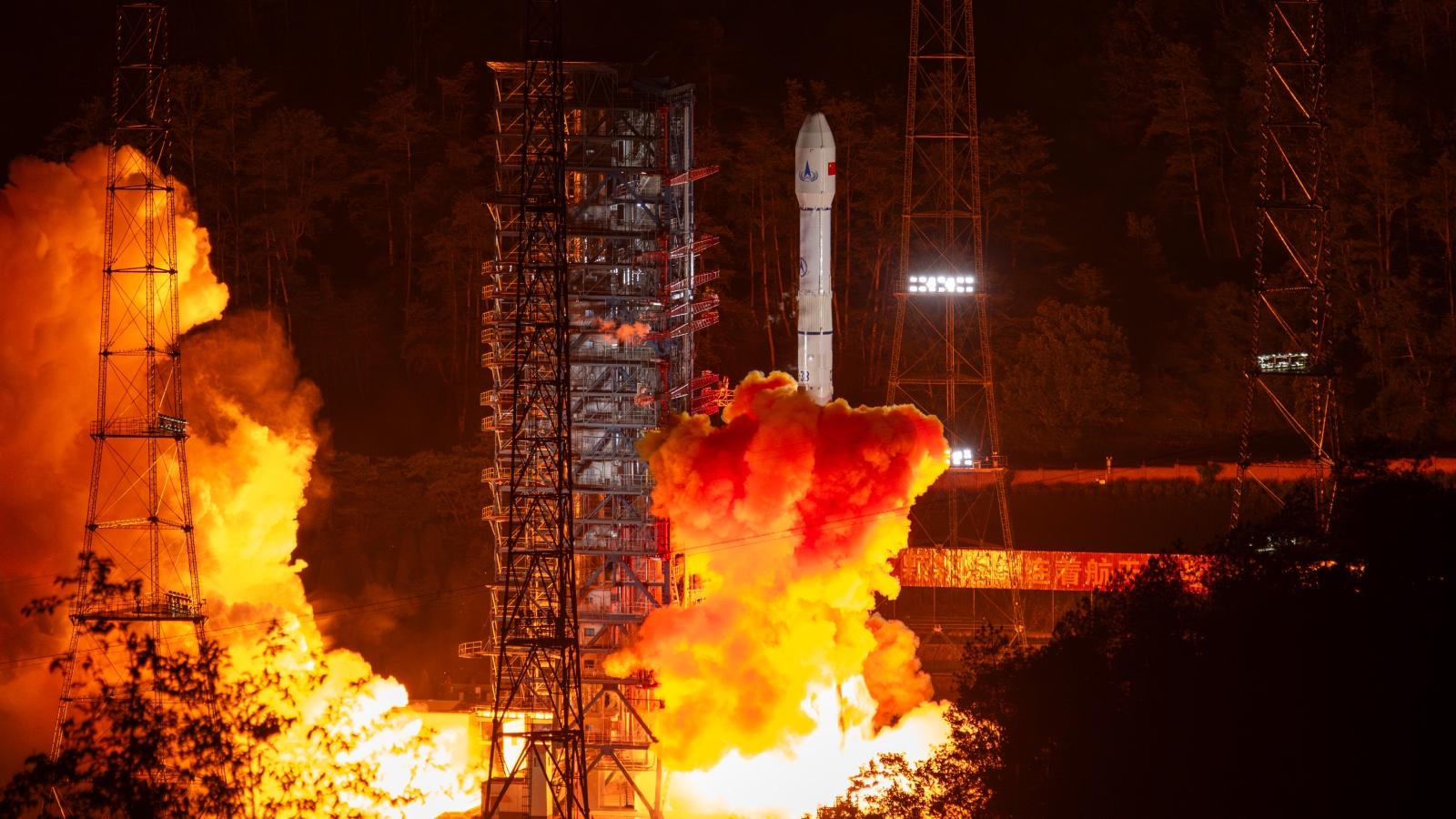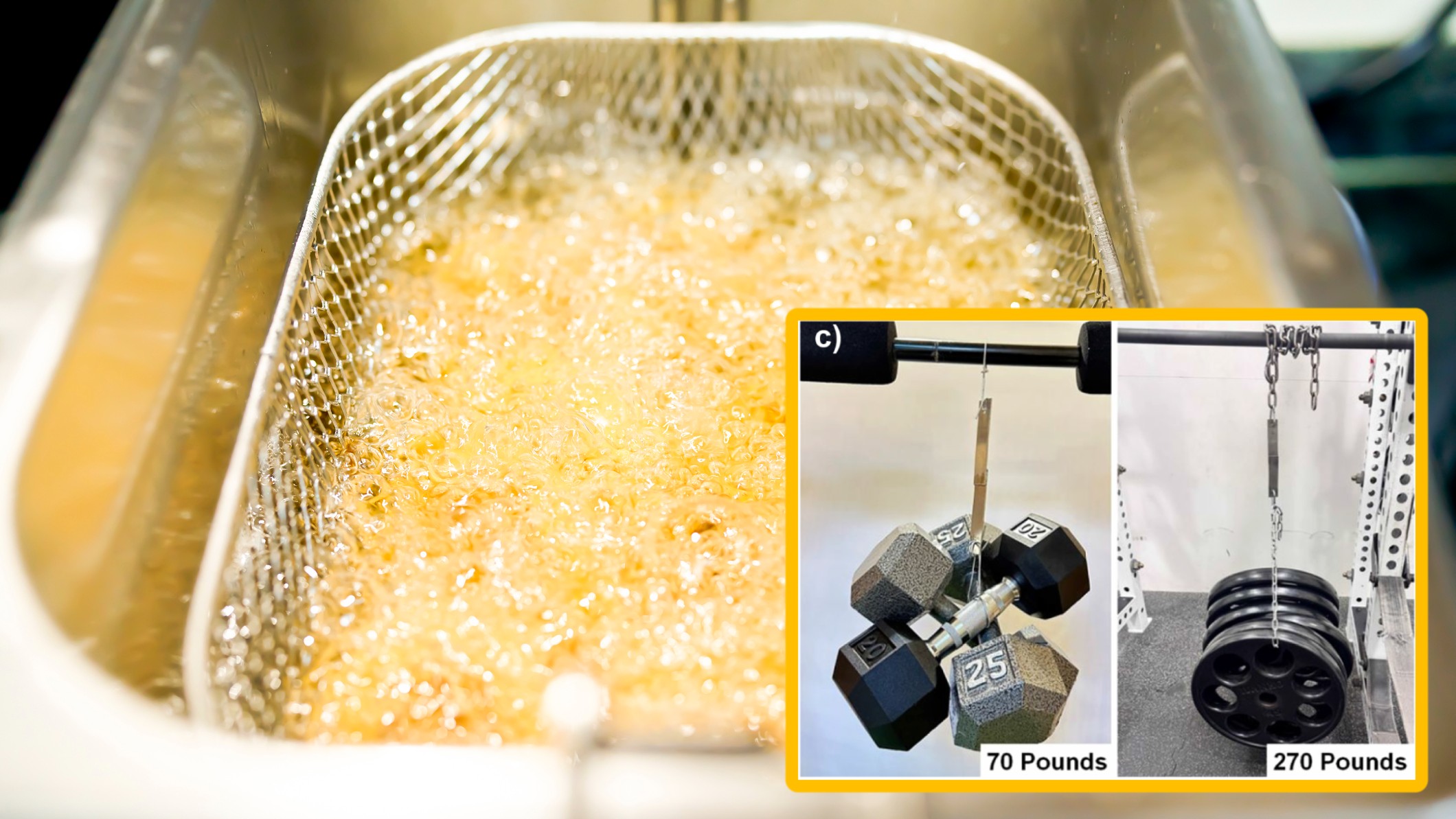First-ever image of China's mysterious 'quasi moon' probe revealed weeks after it secretly launched into space
A new image released by China's space agency offers the first glimpse at the Tianwen 2 spacecraft, which is en route to collect samples from one of Earth's "quasi-moons". The photo shows some surprising similarities with a current NASA probe.

Chinese officials have revealed the first-ever photo of the country's highly secretive Tianwen 2 spacecraft, two weeks after it was launched into space. The elusive probe, which bears a striking resemblance to a current NASA spacecraft, will attempt to collect samples from one of Earth's mysterious "quasi-moons" next year.
On May 29, the Tianwen 2 probe was successfully launched into space onboard a Long March 3B rocket, which took off from the Xichang spaceport in southwestern China at around 1:31 a.m. local time, Live Science's sister site Space.com previously reported.
The spacecraft is scheduled to make a close approach to the asteroid 2016 HO3, better known as Kamo'oalewa, in July 2026, when it will attempt to land on the ferris wheel-size space rock and collect samples that will later be returned to Earth. Kamo'oalewa, which translates to "oscillating celestial object" in Hawaiian, is a quasi-satellite of Earth, meaning it orbits the sun alongside Earth and circles our planet, but is not gravitationally bound to it and will one day float away.
The Tianwen 2 mission has been kept closely under wraps. The launch was not livestreamed by the China National Space Administration (CNSA), which announced the successful liftoff around an hour after it happened. Until now, the probe had never been photographed — all we knew about its appearance came from some rather basic artistic renderings released after launch, according to Space.com.
But on Friday (June 6), CNSA released a statement revealing that the probe is functioning as planned and is already around 1.9 million miles (3 million kilometers) from Earth — around eight times further away than the moon. The release also included a surprise first picture of one of the probe's 10-sided solar panels stretching out into the void of space.
Related: Undiscovered extra moons may orbit Earth. Could they help us become an interplanetary species?

The new photo hints that the Tianwen 2 probe likely looks similar to the spacecraft used in NASA's Lucy mission, which also sports decagonal solar panels and is currently en-route to the "Trojan asteroids" surrounding Jupiter. It also looks very different from the Tianwen 1 spacecraft, which carried China's Zhurong Mars rover to the Red Planet in 2021 — and had rectangular solar panels. (Tianwen roughly translates to "Questions to Heaven.")
Get the world’s most fascinating discoveries delivered straight to your inbox.
If Tianwen 2 successfully makes it to Kamo'oalewa and collects its desired samples, it is due to drop the asteroid fragments back to Earth during a close flyby in late 2027. The samples will then hopefully be retrieved from a return module, similar to the OSIRIS-Rex samples that landed in the Utah desert in September 2023.
After that, the spacecraft will begin its secondary mission to visit 311P/PanSTARRS, a comet-asteroid "hybrid" located in the main asteroid belt between Mars and Jupiter, by around 2035.

Quasi-moon
Kamo'oalewa is somewhere between 130 and 330 feet (40 to 100 meters) wide and has a minimum distance of 2.9 million miles (4.6 million km) from Earth. It circles our planet every 45 years or so and is believed to be a chunk of Earth's proper moon that was ejected during a meteor strike millions of years ago.
Earth has six other quasi-moons, which all orbit the sun alongside our planet but are not permanently fixed to us. These space rocks are sometimes referred to as "minimoons." However, this term is usually reserved for objects that temporarily orbit our planet at much closer distances for short periods, usually less than a year.
One such minimoon was the asteroid 2024 PT5, which was first discovered in September 2024 and orbited Earth for around three months.
Astronomers suspect that there are likely many more quasi-moons and minimoons around Earth waiting to be found. Recent research has also hinted that there may be similar "co-orbitals" hidden around Venus, which could one day pose a threat to Earth if they are wrestled away by our planet's gravity.

Harry is a U.K.-based senior staff writer at Live Science. He studied marine biology at the University of Exeter before training to become a journalist. He covers a wide range of topics including space exploration, planetary science, space weather, climate change, animal behavior and paleontology. His recent work on the solar maximum won "best space submission" at the 2024 Aerospace Media Awards and was shortlisted in the "top scoop" category at the NCTJ Awards for Excellence in 2023. He also writes Live Science's weekly Earth from space series.
You must confirm your public display name before commenting
Please logout and then login again, you will then be prompted to enter your display name.


